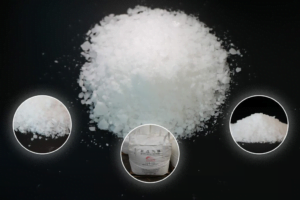Introducción
In the intricate web of human endeavors, the symbiotic relationship between progress and environmental responsibility has become a critical consideration. Sodium formate, a versatile chemical compound with diverse applications, embodies this balance, raising questions about its environmental implications. This article embarks on an exploratory journey to dissect the intricate tapestry of sodium formate’s interactions with the environment, unveiling its potential benefits, challenges, and the complex choices that shape its usage.
- Introducción
- Sodium Formate: A Multifaceted Player
- Assessing Environmental Impact
- Biodegradability and Ecotoxicity
- Degradation Pathways
- Impact on Aquatic Organisms
- Eco-Friendly Applications
- Deicing and Snow Removal
- Industria del cuero*
- Regulatory Framework and Sustainable Practices
- REACH Regulations
- Life Cycle Assessment (LCA)
- Striking the Balance: The Way Forward
- Preguntas más frecuentes
- Conclusión
Sodium Formate: A Multifaceted Player
Sodium formate, with its diverse roles across industries, presents a nuanced narrative that intertwines its utility with the impact it may exert on the environment. As a deicing agent, corrosion inhibitor, and more, sodium formate’s footprint stretches beyond its chemical composition.
Assessing Environmental Impact
Biodegradability and Ecotoxicity
Sodium formate’s fate in the environment is a subject of keen scrutiny. It demonstrates a moderate level of biodegradability, breaking down through natural processes over time. However, the implications of its degradation products and potential ecotoxicity warrant consideration.
Degradation Pathways
As sodium formate enters ecosystems, it undergoes degradation through microbial activity and hydrolysis. This breakdown leads to the formation of formic acid, which can influence the pH of aquatic environments and impact aquatic life.
Impact on Aquatic Organisms
The interaction between sodium formate and aquatic organisms sheds light on potential ecological implications. While its biodegradability lessens long-term concerns, immediate exposures to concentrated solutions can pose risks to aquatic life.
Eco-Friendly Applications
Deicing and Snow Removal
Sodium formate’s role in deicing agents presents a mixed picture. While it offers benefits such as effective ice melting and reduced environmental impact compared to traditional chloride-based salts, it requires careful application to prevent excessive accumulation and potential harm to aquatic ecosystems.
Industria del cuero
In the leather industry, sodium formate’s contributions to tanning processes align with sustainable practices. Its efficient use minimizes the environmental footprint by optimizing chemical usage and reducing waste.
Regulatory Framework and Sustainable Practices
REACH Regulations
The REACH (Registration, Evaluation, Authorization, and Restriction of Chemicals) regulations in the European Union mandate the assessment and management of chemical risks. This framework ensures that sodium formate, like other chemicals, undergoes thorough scrutiny before reaching the market.
Life Cycle Assessment (LCA)
Life Cycle Assessment (LCA) provides a comprehensive view of the environmental impact of sodium formate throughout its lifecycle—from production to application and disposal. This approach aids in identifying potential areas for improvement and promoting sustainable practices.
Striking the Balance: The Way Forward
As society navigates the complexities of sodium formate’s environmental implications, a balanced approach emerges. Effective usage practices, proper disposal, and continuous research contribute to minimizing its impact. The synergy between technological advancements, regulatory frameworks, and responsible decision-making defines the trajectory towards harmonizing chemical utility with environmental stewardship.
Preguntas más frecuentes
Q1: Is sodium formate considered a green alternative in comparison to other chemicals?
A1: Sodium formate is often considered a more environmentally friendly option in various applications due to its biodegradability and lower toxicity compared to certain alternatives. However, careful usage and disposal are still essential.
Q2: Can formiato de sodio be harmful to soil and vegetation?
A2: In controlled and reasonable quantities, sodium formate is unlikely to cause significant harm to soil and vegetation. However, excessive concentrations can lead to imbalances in the ecosystem.
Q3: Are there ongoing research efforts to improve the environmental profile of sodium formate?
A3: Yes, research is continually advancing our understanding of sodium formate’s interactions with the environment. Efforts to optimize usage and develop eco-friendly formulations are underway.
Conclusión
The tale of sodium formate’s environmental implications unfolds as a multifaceted narrative, weaving together science, industry, and ecological responsibility. As society strides towards sustainability, the dialogue surrounding sodium formate serves as a microcosm of the broader discourse on chemical utility and its ecological consequences. By embracing a holistic approach that marries innovation with conscientious practices, sodium formate exemplifies the intersection where chemistry and ecology find common ground, fostering a harmonious coexistence with the world we inhabit.



